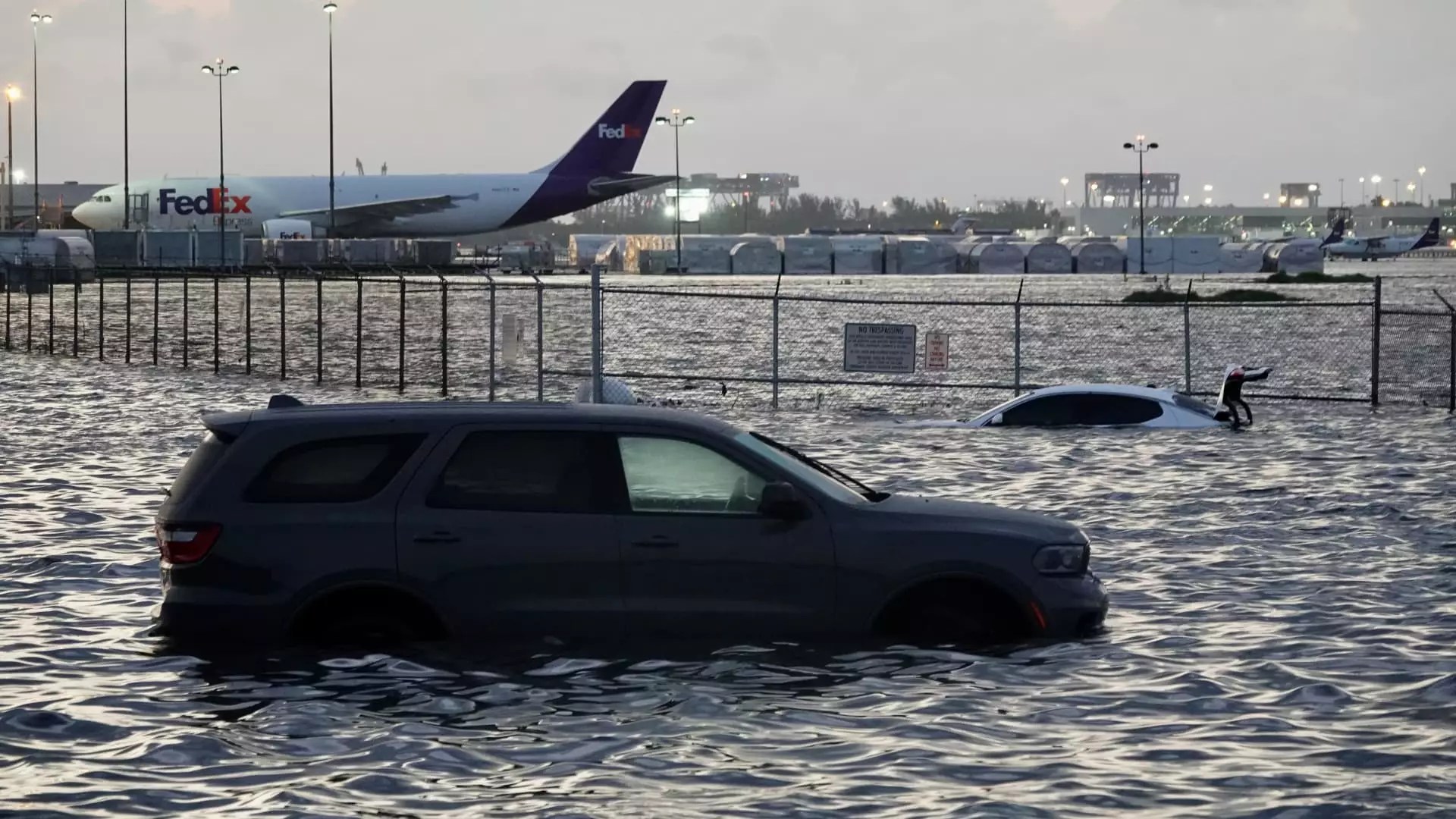The United States’ infrastructure, once regarded as a symbol of national progress and resilience, is now dangerously outdated and ill-equipped for the realities of a rapidly changing climate. Most of our transportation, power, and communication networks were designed decades ago, built for a climate that no longer exists. This disconnect has led to a fragile system that buckles under the weight of increasingly severe weather events. Flooded runways, overheated bridges, and overwhelmed utility grids have become unfortunate commonplace. The grim truth is that our infrastructure is not just aging; it is fundamentally misaligned with the demands of the 21st century’s environmental challenges.
Climate change: exposing infrastructural vulnerabilities
Recent incidents vividly illustrate how our infrastructure is failing under the pressure of climate change. In Fort Lauderdale, historic rainfall transformed airport runways into rivers, halting flights and stranding travelers—an inconvenience that signals a deeper systemic issue. Similarly, in New York City, an annual heatwave caused metal components on a bridge over the Harlem River to expand to the point of malfunction, temporarily trapping traffic and putting commuters at risk. These events are not anomalies but symptoms of a system that was never designed to withstand the intensifying impacts of global warming. The American Society of Civil Engineers (ASCE) has issued a stark warning: every infrastructure sector now faces rising risks from climate-related phenomena, demanding immediate, decisive action.
the economic and strategic fallout
Investors and policymakers alike are waking up to the realization that climate-related risks threaten to undermine billions in infrastructure investments. According to climate risk analytics firm First Street, nearly 12-19% of critical infrastructure—power, telecommunications, and airports—is vulnerable to floods, fires, or windstorms. This exposure translates into significant financial risks, which create a dilemma for investors seeking stable, long-term returns. Sarah Kapnick from JPMorgan Chase emphasizes that clients are increasingly concerned about insuring and financing resilient infrastructure. Without a comprehensive shift in how we design, build, and repair, the economic fallout from infrastructure failure could be catastrophic, stalling progress and hampering growth in an already volatile environment.
science under siege and the fight for resilience
Despite the urgent need for climate-resilient infrastructure, federal support for the science behind adaptation has notably waned. The Trump administration’s cuts to agencies like NOAA, FEMA, and the NIST removed vital resources that advance our understanding of climate impacts. This systemic neglect hampers our ability to forecast risks accurately and implement necessary engineering solutions. As Kapnick warns, the policy vacuum leaves markets and communities floating without reliable data, increasing the likelihood of disaster and economic instability. Restoring and investing in scientific research is indispensable if we are to develop infrastructure capable of withstanding future climate shocks.
funding shortfalls and policy neglect
Perhaps most troubling is the glaring funding gap in our nation’s infrastructure overhaul. The ASCE estimates a staggering $3.7 trillion needed over the next decade to bring our roads, bridges, and utilities into a state of adequate resilience. Yet, federal actions—such as cancelling vital programs like FEMA’s Building Resilient Infrastructure and Communities—reflect a disturbing disregard for proactive measures. Instead of investing in projects that mitigate damage and save lives, policymakers continue to prioritize short-term budgets over long-term security. This pattern of neglect not only jeopardizes economic stability but also questions America’s commitment to safeguarding its future.
a call to rethink priorities
It is implicit that the current approach to infrastructure is shortsighted and dangerously complacent. The cost of inaction far exceeds the expense of preventative resilience measures. Addressing this crisis demands a radical shift in priorities—moving from reactive repairs to strategic investments that anticipate future climate scenarios. Bridging the funding gap, integrating scientific insights into engineering standards, and adopting proactive policies are essential steps. Ultimately, the resilience of the nation’s infrastructure depends on our willingness to acknowledge the gravity of climate change and act decisively before more lives and economic stability are lost. The window for meaningful change is narrow, and complacency is no longer an option.


Leave a Reply